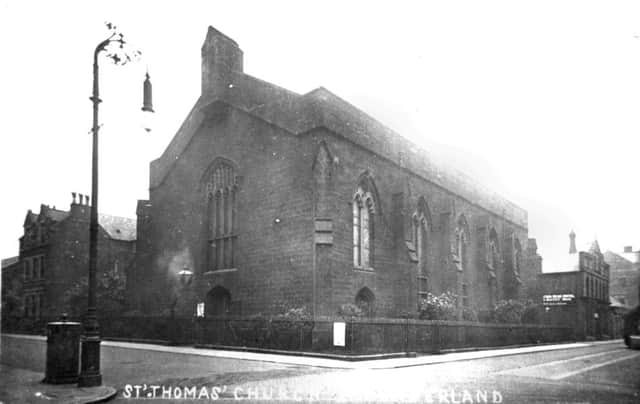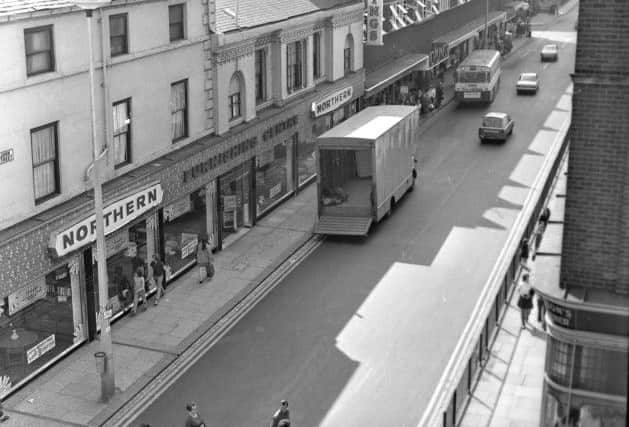The Sunderland street that saw bombs, servants and fine wines


If ever you wanted a history of a city street complete with maids, servants and carriages, this was it.
Philip Curtis from the Sunderland Antiquarian Society explains more.


Advertisement
Hide AdAdvertisement
Hide AdA tale of two halves may be the best way to describe John Street.
To the north of St Thomas Street, the block is dominated by the empty building that once was Joplings department store.
Go south and it is as if you are crossing a boundary. This end is far more business-like with the former grand houses of the middle-classes now mainly used as offices.
The street was built between 1800 and 1850 and originally housed many important Wearside businessmen and their families.


Advertisement
Hide AdAdvertisement
Hide AdIn its early years, John Street was the epitome of sedate, middle-class respectability.
It was a street of crinolines, carriages, maids and servants which seemed far removed from the rowdy dockland area of lower High Street, which was just a saunter away.
The first wave of businesses into residential John Street included solicitors, some of whose firm names still exist today in the street.
It happened when the popularity of the east end began to wane.
Advertisement
Hide AdAdvertisement
Hide AdThat’s when commerce began to spread from the previously prosperous High Street East into the north end of John Street – the oldest section, close to where St Thomas’ Church stood.
But it was after the Second World War that this once quiet street really began to get busy.
Shops, which had been bomb-damaged or demolished, moved in, and they included the hardware firm of J. Strother & Son which transferred from its bombed-out premises in High Street West.
Meanwhile, Joplings - after being destroyed by fire - relocated in May 1956.
Advertisement
Hide AdAdvertisement
Hide AdUp to the start of the Second World War, John Street was seen as one of the finest residential streets in the city.
In the early part of the twentieth-century the wine and spirit merchants, J.W. Cameron & Co Ltd, occupied Nos 1, 2 and 3 John Street with the rest of the block taken up by St Thomas’s Church and the verger’s house, both built in 1828.
Change came with the destruction of the church in March 1943 by a German bomb. The church was not rebuilt and the site was ripe for any new commercial enterprise to take over.
This was to prove a godsend to Joplings the following decade.
Advertisement
Hide AdAdvertisement
Hide AdCameron’s buildings were taken over by the Northern Furnishing Company. It stayed throughout the 1970s until the continual westward movement of the commercial centre of the town brought closure.
Until 1958, the west side of this block still retained one of its Georgian properties, No. 66 John Street.
However it was demolished that year to make way for an extension to Woolworths.
The pillared entrance to the house, built in 1827, was moved to the south end of the street and installed at the front of one of the solicitor’s offices, where it still remains today.
Advertisement
Hide AdAdvertisement
Hide AdRisdon’s in the north-west block of the street lasted until 1977. It sold everything for babies from shawls to prams.
Today, the premises are occupied by a bookmaker.
The remaining buildings in the two other blocks are now used as offices with the exception of one or two which have recently been altered to become shops or coffee shops.
The south-east block boasted two magnificent buildings at either end: the Water Company on the corner of Borough Road and the Constitutional Club on the corner of Athenaeum Street.
In the early twentieth-century, the Water Company was altered into an apart-hotel and renamed Hawksley House and the Club was demolished and replaced by an office block.
In 1876, Nos 43 and 44 became the County Court and the west corner of the block was rebuilt in 1929 as an extension to Binns.